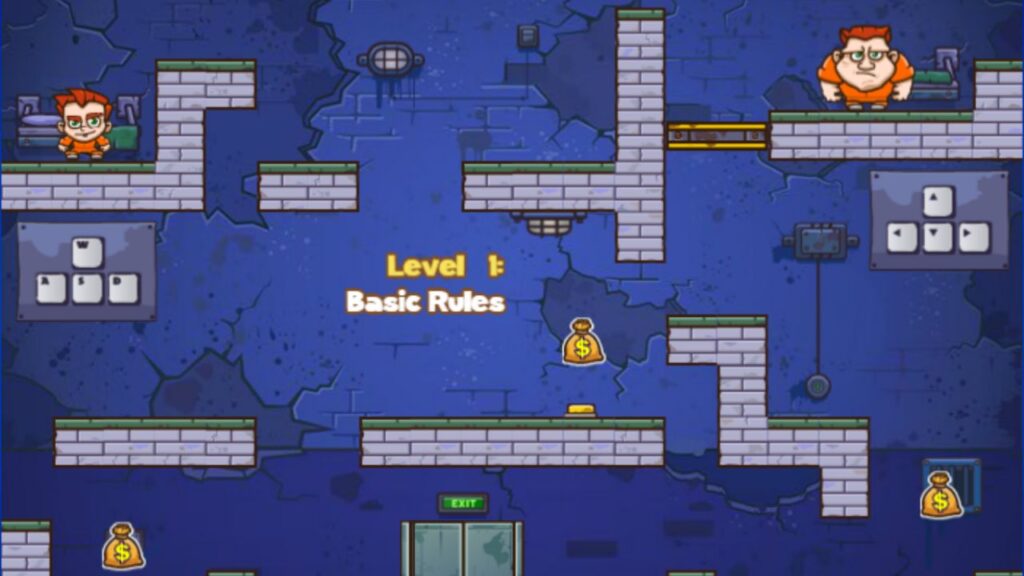Goodgame Empire is a classic browser-based strategy title developed by Goodgame Studios and released in 2011. Set firmly in the medieval era, it requires meticulous management of city-building, complex resource chains, and extensive military campaigns. Unlike simpler real-time strategy games, Empire focuses on a deliberate, long-term progression defined by persistent political alliances and calculated, methodical warfare across multiple, specialized kingdoms.
Success in this environment is purely a function of planning and patience, where a single day of inefficiency can set back long-term goals by weeks. The game’s longevity is a testament to its deep strategic complexity, where the highest levels of competitive play demand expertise in game economics as much as military tactics.
| Fact Sheet | Detail |
|---|---|
| Developer | Goodgame Studios, Altigi GmbH |
| Release | 14 August 2011 |
| Genres | Strategy, Massively Multiplayer Online Game (MMOG), City-Building |
| Platforms | Web browser (PC/Mobile) |
| Controls | Primarily Mouse-driven UI |
Goodgame Empire Gameplay
The core of Goodgame Empire is a perpetual cycle of resource production, technological research, and military expansion. You begin as a low-level ruler with a small castle. Still, the true test of expertise lies in maintaining Continuous Production Slots (CPS) – meaning your builders, barracks, and research tower are never idle. The initial goal is to establish an economic engine capable of consistently maximizing your four main resource types (Wood, Stone, Food, and Gold) to fuel an army large enough to conquer and hold territory across the four distinct kingdoms. Warfare is not about raw numbers; it is a complex, deterministic system of counter-units where effective espionage and precise troop composition are the main deciding factors. The fate of your empire depends entirely on how well you balance a robust internal economic health against the demands of external military ambition, especially against coordinated enemy alliances.
The game is designed with a deliberate bottleneck in place: time and Gold. Every action, from training a soldier to leveling a wall, takes time and costs Gold, which is constrained by a finite collection rate. High-level strategy involves minimizing this time-to-production ratio through constant research and the acquisition of specific Castellan gear. Learning the political landscape and identifying key, vulnerable targets for territorial expansion is the necessary military complement to internal economic growth, ensuring that every military victory yields a substantial, profitable gain.
Getting Started
To access Goodgame Empire, players simply need to open a web browser on their computer or mobile device and log in or create a new account. The game is entirely browser-based, eliminating the need for large downloads and ensuring rapid access. This also means that gameplay continuity is seamless across multiple platforms – you can manage your resources on a smartphone and coordinate a military campaign on a desktop without interruption.
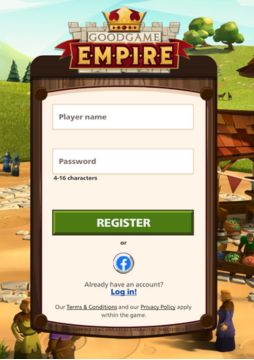
While social media login options exist for convenience, maintaining a dedicated game account is a straightforward and often preferred method for high-level players.
Building Castle: The Early Phase and Resource Management
The most common and most detrimental mistake new players make is prioritizing defensive walls, moats, or purely decorative buildings in the initial phase. The first 30 levels of your Main Castle should be entirely focused on economic acceleration. Your absolute priority is to place and constantly upgrade your Woodcutters, Stone Quarries, and Farms in every available internal building slot. The aim is to achieve a net positive flow sufficient to keep your builders busy 24/7.
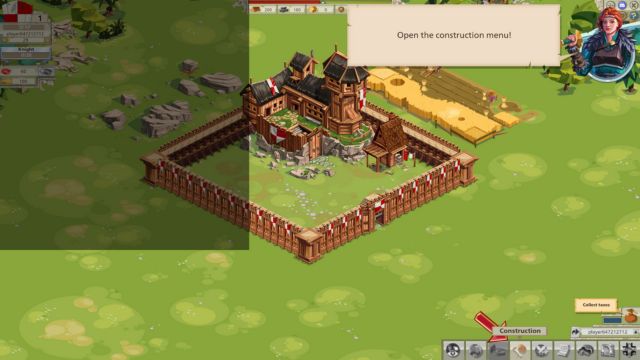
Wood is the critical early bottleneck, required for nearly all foundational structures and initial building levels. However, as the castle matures, the constraint shifts entirely to Stone. Stone is required in astronomical quantities for the extremely expensive, yet essential, upgrades to the Outer Wall and Gate, especially the massive defense point leaps provided past level 40. Expert players recognize the need to upgrade the Storehouse early and often to hold sufficient reserves of Wood and Stone to fund these high-cost upgrades in a single transaction.
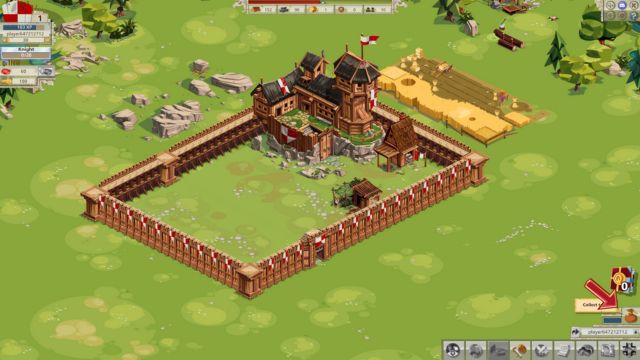
Furthermore, the Research Tower must be kept perpetually busy. Every research upgrade that reduces a cost (e.g., troop training time or research time reduction) provides a permanent, systemic advantage that compounds over years of play, yielding far greater long-term value than any temporary resource boost or decorative structure. Prioritize the basic economic and military research paths before investing in high-cost cosmetic or alliance perks.
Collecting Taxes
Gold is the lifeblood of your military, funding troop training, commander fees, and unit maintenance. However, Gold generation is artificially limited by the Tax Cap, which is determined by the current level of your Treasury and the number of Houses you possess. The outdated advice of collecting taxes once a day is inherently inefficient. Expert players recognize that the tax collector gathers coins rapidly in the first few hours before the collection rate dramatically declines as the local Tax Cap is approached. Therefore, high-efficiency players log in several times daily, often every 4-6 hours, to recall the Tax Collector when the income rate visibly dips. This ensures you are utilizing your maximum hourly collection rate, preventing Gold from being wasted sitting idle under the cap.

The Houses you build are also critical, as they directly increase the overall Tax Cap, allowing you to sustain a larger army without constantly running into a Gold crisis. Strategically, using the Marketplace to sell off surplus resources (such as Wood, which becomes less valuable in the late game) for immediate Gold conversion is often necessary to fund a sudden, large troop training order required for defense or a surprise attack. This careful micromanagement of the Gold economy is a hallmark of an expert player.
Joining Community
In a game built on persistent, massive multiplayer warfare, joining an active, disciplined Alliance is non-negotiable for long-term survival and success. An isolationist player will inevitably be identified and destroyed by coordinated enemies. The benefits of alliance membership extend far beyond simple social chat and provide concrete strategic advantages.
A strong alliance grants access to the Alliance Research Tree, which provides permanent, passive bonuses across all member castles, such as significant increases in combat strength, reduced building costs, or faster troop recovery times. These collective research efforts are mandatory for remaining competitive at the high levels. More importantly, an alliance provides immediate Defense Reinforcements to repel large-scale, coordinated enemy attacks, serving as the ultimate insurance policy. Access to the Tribute System for resource transfers allows members to fund each other during critical economic crises or massive, rushed military builds.

When searching for an alliance, prioritize groups that coordinate Kingdom War attacks, enforce mandatory participation, and run regular, structured strategic training sessions. The internal rules regarding player conduct, such as prohibiting unprofitable low-level attacks, are also indicators of a mature, successful leadership structure.
Fighting Battles: Economic Raiding and Risk Management
Raiding other players is a critical supplementary source of resources, especially for immediate needs like funding a large wall upgrade or a sudden troop massing. However, this is a high-risk, high-reward economic activity that demands calculated risk assessment. The primary rule of successful raiding is profitability. Never attack a target unless your Spymaster report indicates a resource yield (Wood, Stone, Gold) that heavily outweighs the cost of the attacking troops you expect to lose.
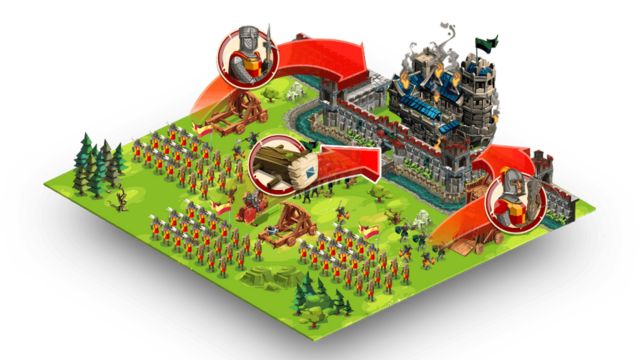
Attacking a target whose Defense Point (DP) is significantly higher than your Breach capability is a guaranteed failure and a highly costly endeavor. A military defeat not only results in the catastrophic loss of all attacking troops, which represents a massive, non-recoverable investment of Food, Wood, and Gold used for their training, but also renders your deployed Commander or Castellan temporarily unusable. This results in crucial downtime, forcing you to spend Rubies or wait many hours for them to recover, thus halting your next planned military action or resource boost. Therefore, all attacks must be surgical and based on exploiting known weaknesses, not sheer force.
The battle itself is governed by a highly deterministic rock-paper-scissors counter system where precise unit composition, espionage, and siege management are paramount. Before initiating any attack, the Spymaster must provide a precise Defense Point (DP) report detailing the enemy’s wall strength, specific defensive unit types, and the defensive tools deployed. Ignoring this data is the quickest route to catastrophic troop losses
Attack Composition and Ratios:
- Siege Equipment: This is the most critical element. It must be present in sufficient mass to entirely neutralize the enemy’s fixed Wall Defense Points (DP) and Defense Tools (Moats, Boiling Oil). If the siege fails, your costly Melee and Ranged troops will be slaughtered before they can engage the enemy.
- Melee Units (Frontline): Units like Berserkers and Pikemen are the primary damage absorbers and courtyard fighters. Their composition must be chosen based on countering the enemy’s main defensive unit type.
- Ranged Units (Damage Output): Units like Imperial Crossbowmen provide the sustained, high damage output. Their placement and survival are paramount; they must be protected by the Melee frontline.
- Hard Counters: Never send a mixed army blindly. If a defense is stacked with Pikemen (units with an Anti-Melee bonus), your attack must be saturated with Ranged Units to exploit that weakness, minimizing your own casualties.
Defense Layering:
- A truly effective defense is layered: Defense Tools (Moats, etc.) absorb siege damage. Behind them, a 60-70% ratio of Ranged Defense Units on the Wall provides sustained initial damage, supported by 30-40% Melee Defense Units to withstand the initial breach. The Gate must be heavily stacked with defensive troops and protected by Boiling Oil, as it is the most common target for enemy siege waves.
Strategies for Total Dominance
These strategies move beyond introductory mechanics and reflect the nuanced decisions made by veteran players who achieve and maintain long-term territorial control.
Prioritize Territory Specialization: The Four Kingdoms
Expert players recognize that the four main kingdoms, the Great Empire, Ice Empire, Burning Sands (Desert Empire), and Stormy Archipelago (Storm Islands), are not generic maps but highly specialized economic zones.
- Great Empire (K1): This must be your Research and Military Hub. It houses the majority of your Barracks and the perpetually running Research Tower. Resource production here should be minimal; its space is better used for Houses to maximize the Gold Tax Cap.
- Ice Empire (K2): This is the mandatory Food Engine. Its specialized Farms are critical for generating the massive quantities of Food needed to sustain a late-game army without facing desertion. Its Ice Units (e.g., Glacier Guard) are situational counter-troops for specific defenses.
- Desert Empire (K3): The primary value of this kingdom is resource generation, but more critically, it is the best place to farm high-level Robber Baron Camps for Event Currency (Tokens) and Rubies. This currency is essential for acquiring powerful, permanent Castellan gear.
- Storm Islands (K4): This is a late-game strategic investment, providing the unique resource Salt and specialized building slots that can significantly boost the effectiveness of your highest-level Castellan bonuses across all four kingdoms. It is used to fine-tune high-level combat statistics.
Commander and Castellan Gear Meta
The difference between mid-tier and top-tier players is the bonus provided by Legendary and Mythic Gear Sets. Success is often entirely determined by the bonuses granted by your assigned Commander (who provides combat buffs) and Castellan (who provides resource and defense buffs).
The strategy is to Hoard Event Currency (from Nomads, Samurai, etc.) and save it exclusively for the highest-tier Legendary Gear Sets. Avoid spending currency on low-value items. A full set bonus from a Legendary or Mythic gear collection can easily provide a non-linear 50% increase in attack power or a substantial reduction in troop training time across your entire empire. These set bonuses are permanent and constitute the single most significant factor in competitive advantage.
Food: The Late-Game Challenge
While Wood and Stone constrain early growth, Food becomes the persistent, existential threat in the late game. As your army and garrisons grow across all four kingdoms, your Food consumption skyrockets. If your food storage is depleted, your most valuable, high-tier troops will begin to desert – a devastating and costly loss. Expert players must maintain a colossal Food Surplus at all times. Prioritize leveling up the Storehouse and Farm buildings in the Ice Kingdom relentlessly, ensuring that your Food production always exceeds the sustained consumption rate of your standing army by a wide margin. Treating Food management as a core defensive measure against internal collapse is essential for long-term power projection.
Playing and Alternatives
Goodgame Empire works in any modern web browser, no downloads needed. Just log in and start building.
If you like this type of slow, strategy-heavy gameplay, try these games:
- Rise of Kingdoms (Mobile): City-building with large-scale real-time battles.
- Forge of Empires (Browser & Mobile): Historical city-building and PvP battles.
- Tribal Wars (Browser): Alliance-focused, political, and competitive gameplay.




